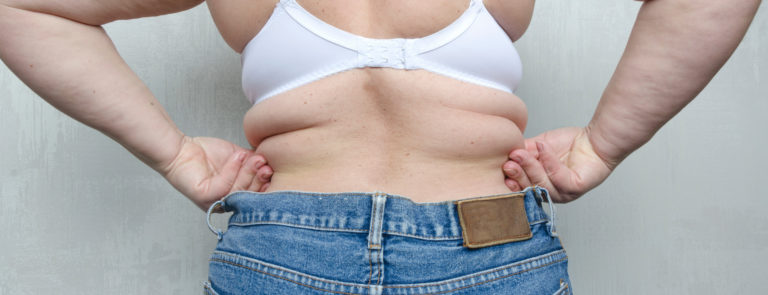The excess fat that sits on the sides of the waist are often referred to as love handles.
Yet despite their cute name, there is not much to love about them.
Their underlying cause is fat retention and it can be challenging to get rid of quickly.
Love handles are not gender specific. You get love handles on women and love handles on men mainly because we all tend to lead sedentary lifestyles, which involve sitting at our desks for hours on end.
If you really want to lose love handle fat, you need to commit to making lasting changes to your lifestyle, diet, and exercise routine.
Here we answer some top questions about how best to get rid of love handles.
1. Should I do a love handle-focused workout?
Yes - one of the best ways to lose love handles is by increasing the number of calories you burn throughout the day.
As a general guide, every adult should be doing at least 150 minutes of moderate to intense activity or 75 minutes of vigorous activity a week.
Which is equivalent to about 20 minutes of physical activity a day.
1
Exercises for love handles should ideally target the abdominal area of the body as this is where the more stubborn fat is.
Your aim is to firm up the muscles in this area and use cardio-vascular and resistance training to burn the fat.
If you are new to exercise, then pilates or yoga are excellent beginner-friendly exercises that are beneficial for toning the abdominal muscles and supporting flexibility, posture, and core strength.
If you are already used to keeping fit, then there are a
wide range of exercises you can do to help reduce those love handles.
As you progress, try and opt for whole-body workouts, which focus on a large number of muscles at the same time such as high intensity aerobic exercises, burpees, and full body squats.
2. What kind of foods will help me lose my love handles?
A diet rich in whole, unprocessed foods is another way to lose love handles.
2 This means significantly reducing the intake of sugars found in chocolates, sweets, biscuits, and cakes for example.
Instead, focus on filling up on healthy fats such as avocados, olive oil, nuts, seeds, and fatty fish as well as plenty of fresh vegetables, and fruits.
Try to swap out the refined carbohydrates found in white bread, pasta and white rice for complex carbohydrates such as sweet potatoes, beans, oats, and brown rice.
And if you feel the urge to snack, adding some high-quality protein to your diet will help keep you full between meals.
If you would like more information on how you can eat better, you might like to read
more tips for healthy eating.
3. Which drinks will help to reduce love handles?
Keeping your body hydrated throughout the day helps to regulate your body temperature and ensure that your cells receive the components so that your organs can function properly.
According to the NHS, you should drink between six to eight glasses of fluid a day, including water, low fat milk or sugar-free drinks as well as tea and coffee.
Reducing your alcohol intake and replacing sugary drinks, including soft drinks, sodas, and energy drinks with plain water is a positive step forward to helping lose love handles.
What’s more, water is a healthy and cheap choice as it has no calories and contains no sugars.
4. What does sleeping well have to do with love handles?
Allowing your body to rest helps to lower stress levels.
When your body is tired, it produces the hormone cortisol to help it function better.
Prolonged overexposure to cortisol can cause unwanted side effects such as anxiety, headaches, and weight gain.
Most adults need between six and nine hours of uninterrupted sleep every night so start by working out what time you need to wake up, and then set a regular bedtime schedule.
3
If you have difficulty falling asleep, we have pulled together a list of
12 suggestions that could help you sleep better.
5. How can I stay motivated to lose my love handles?
Setting realistic expectations is important. Getting rid of love handle fat does not happen overnight and you might not see a physical change straight away.
Tracking your progress is a good way to maintain momentum.
Weigh yourself a max of one to two times per week, preferably in the morning before breakfast and keep track of your weight so you can measure your progress.
Keeping a food journal or maintaining a digital meal planner can also help to keep you organised and prevent you from making unhealthy food choices on the spur of the moment.
Finally, why not find an exercise buddy to workout with? Not only is it more fun, but you will be able to inspire and support each other when one of you feels like giving up.
Last updated: 11 December 2020
Sources
1
https://www.nhs.uk/live-well/exercise/?tabname=fitness-guides
2
https://www.nhs.uk/live-well/eat-well/the-eatwell-guide/
3
https://www.nhs.uk/live-well/sleep-and-tiredness/how-to-get-to-sleep/




